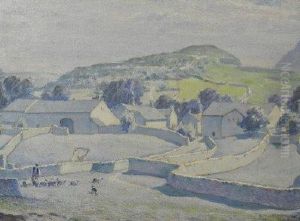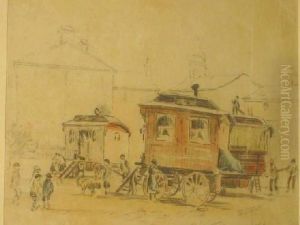John Smith Atherton Paintings
John Smith Atherton, while not one of the most widely recognized names in the art world, was an American artist whose work contributed significantly to the visual culture of the early to mid-20th century. Born in 1900, Atherton's career spanned a period of rapid change in American society, from the aftermath of World War I through the Great Depression, and into the post-World War II era. His artistic output reflects a keen observation of the world around him, often infused with a sense of surrealism and a deep introspection about the human condition.
Atherton's early life was marked by a profound interest in art, leading him to pursue formal education in this field. He attended various art schools, where he honed his skills in drawing, painting, and printmaking. His early works were influenced by the prevalent art movements of his time, including Realism and Impressionism, but he gradually developed a distinctive style that incorporated elements of Surrealism. This transition mirrored the broader shifts in the art world, as artists sought to explore the subconscious and present a reality beyond the visible world.
During the 1930s and 1940s, Atherton's work gained recognition for its unique blend of realism and fantasy. His paintings often featured landscapes and scenes that, while rooted in the American experience, were transformed through his imaginative lens into something mysterious and otherworldly. This period also saw Atherton engaging with commercial art, creating illustrations for books and magazines, which helped to broaden his audience and influence.
Atherton's contributions to the art world were not limited to his paintings. He was also an active participant in the artistic community, contributing to discussions on the role of art in society and the importance of artistic freedom. His writings on art and his involvement in artists' organizations reflected his belief in the power of art to reflect and shape societal values.
John Smith Atherton's death in 1952 marked the end of a career that, while perhaps not achieving the fame of some of his contemporaries, left a lasting impact on American art. His works continue to be studied and appreciated for their intricate blending of reality and imagination, offering viewers a glimpse into the complex and often surreal landscape of the 20th-century American psyche.

